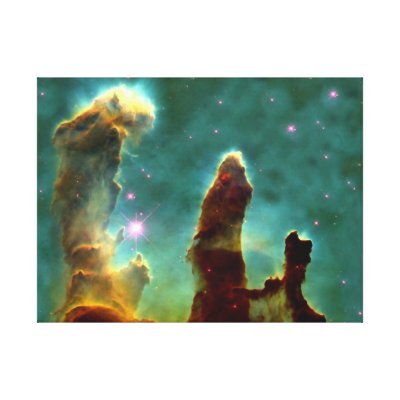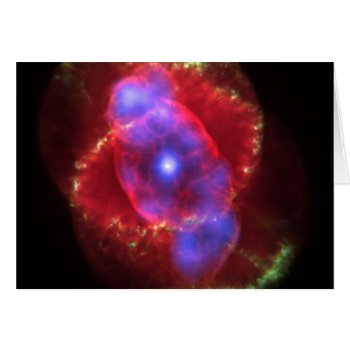The Cat's Eye Nebula (NGC 6543, Caldwell 6) is a planetary nebula in the constellation of Draco. Structurally, it is one of the most complex nebulae known, with high-resolution Hubble Space Telescope observations revealing remarkable structures such as knots, jets, bubbles and sinewy arc-like features. In the center of the Cat's Eye there is a bright and hot star; around 1000 years ago this star lost its outer envelope, producing the nebula. It was discovered by William Herschel on February 15, 1786, and was the first planetary nebula whose spectrum was investigated by the English amateur astronomer William Huggins in 1864. The results of the latter investigation demonstrated for the first time that planetary nebulae consist of hot gases, but not stars. Currently the nebula has been observed across the full electromagnetic spectrum, from far-infrared to X-rays. Modern studies reveal several mysteries. The intricacy of the structure may be caused in part by material ejected from a binary central star, but as yet, there is no direct evidence that the central star has a companion. Also, measurements of chemical abundances reveal a large discrepancy between measurements done by two different methods, the cause of which is uncertain. Hubble Telescope observations revealed a number of faint rings around the Eye, which are spherical shells ejected by the central star in the distant past. The exact mechanism of those ejections, however, is unclear.
Tag Archives: the best
Eagle Nebula Print
This eerie, dark structure in IC 4703 (the Eagle nebula) is a column of cool molecular hydrogen gas and dust that is an incubator for new stars. The stars are embedded inside finger-like protrusions clearly seen extending from the top of the column. Each “fingertip” is somewhat larger than our own solar system. The pillar is slowly eroding away by the ultraviolet light from nearby hot stars, a process called “photoevaporation”. As it does, small globules of especially dense gas buried within the cloud are uncovered. These globules have been dubbed “EGGs” ; an acronym for “Evaporating Gaseous Globules”. The shadows of the EGGs protect gas behind them, resulting in the finger-like structures at the top of the cloud.
Eagle Nebula in space Stretched Canvas Print

This eerie, dark structure in IC 4703 (the Eagle nebula) is a column of cool molecular hydrogen gas and dust that is an incubator for new stars. The stars are embedded inside finger-like protrusions clearly seen extending from the top of the column. Each "fingertip" is somewhat larger than our own solar system. The pillar is slowly eroding away by the ultraviolet light from nearby hot stars, a process called "photoevaporation". As it does, small globules of especially dense gas buried within the cloud are uncovered. These globules have been dubbed "EGGs" ; an acronym for "Evaporating Gaseous Globules". The shadows of the EGGs protect gas behind them, resulting in the finger-like structures at the top of the cloud.


